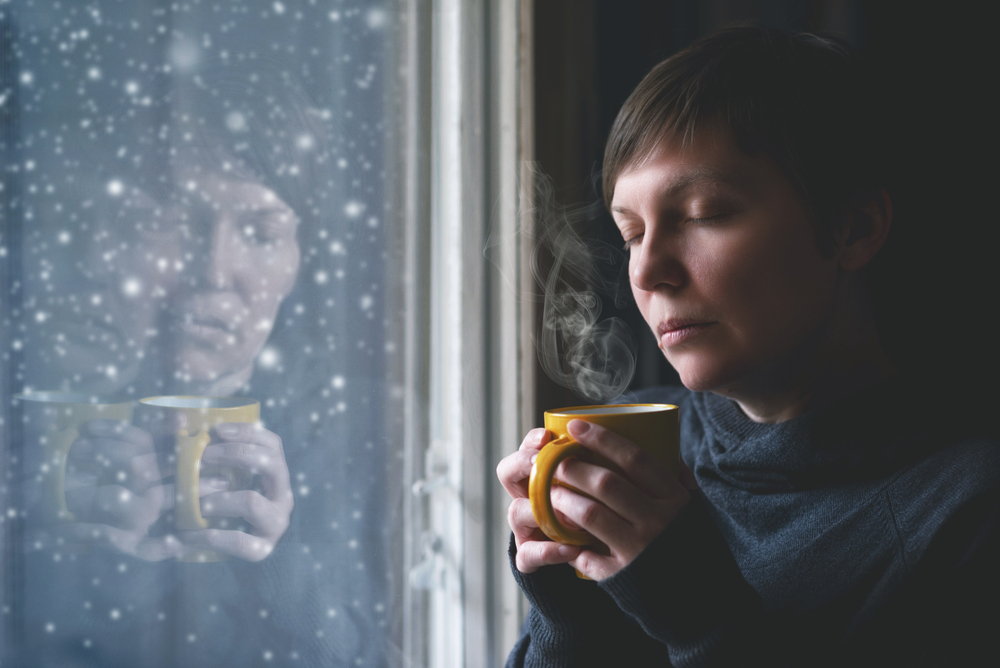Feeling down in the dumps? Low energy? In the doldrums? You might be chalking it up to the pandemic and too much time being cooped up in your home – but it may be something else: Seasonal Affective Disorder.
In the dead of the winter, many people experience their own personal doldrums, with the wind taken out of their sails. Some call it winter depression, melancholia, being down in the dumps or having the blues. Psychologists and health professionals have another term: Seasonal Affective Disorder, or S.A.D., for short. It’s a form of depression that usually occurs in the fall or winter as the days grow short, although some people can experience a reverse onset of S.A.D. in the spring. It’s estimated that roughly 5-6% of the population experiences S.A.D. each winter, and it is about four times more likely to occur in women. It is also more common for people with a family history of S.A.D.
Generally, S.A.D. is thought to be related to changes in your body chemistry, which disrupt your body’s internal clock. It is related specifically to an imbalance or change in the levels of your “feel-good” hormone serotonin and “sleep-wake” hormone melatonin. Lack of light is generally considered a big factor, but there are other factors that can contribute to S.A.D.: The days are short; the nights are long. Cold, wintry weather leads to people spending more time indoors. This “hibernating” instinct can turn us into couch potatoes, with low activity levels, fewer social interactions and greater social isolation. Of course, this year with the pandemic continuing into a third long year, that just adds to any seasonal distress.
What are S.A.D. symptoms?
Symptoms of S.A.D. may vary in severity but usually recur regularly each winter. They may include:
- Sleep problems: This can take many forms such as oversleeping, trouble staying awake, insomnia, sleep disturbances, and irregular sleep patterns.
- Lethargy: Low energy levels. Fatigue and inability to carry out normal routines. Lack of motivation and inability to concentrate.
- Overeating: Craving for carbohydrates and sweet foods, often resulting in weight gain.
- Depression: Feelings of hopelessness, despair, apathy, or loss of feelings. Low self-esteem.
- Social problems: Feelings of anger, irritability, and desire to avoid social contact.
- Anxiety: Tension and inability to tolerate stress. Mood swings.
Here are steps that experts suggest to help you feel better:
- Lighten up. Open blinds or add skylights to your home or office or sit near a window. If you can’t do that, add more artificial light, which can ease symptoms of S.A.D. Many people also find light therapy lamps very helpful.
- Boost your vitamin D intake. We absorb much of our Vitamin D from sun, but you can also get it in your food. Ask your doctor to check your vitamin D level to see if you need a supplement.
- Get outside. Activity is a good antidote to S.A.D., so go hiking, walking, skiing or skating with friends to combine social interaction with exercise. Be sure to dress appropriately, wear reflectors in dim morning or afternoon hours, and avoid wet or slippery surfaces.
- Stick to regular sleep patterns. Schedule your sleep and wake times.
- Explore other therapies. If symptoms persist, talk to a physician to ask about alternate treatments such as hormone or antidepressant therapy. Plus, try at-home relaxation therapies such as meditation and yoga.
- Reach out for help. Talk therapy with counselors can be helpful. Remember, you can call an EAP counselor to get help for S.A.D., depression, anxiety, or other mental health issues anytime, day or night!
Additional resources to learn more:
- Yale School of Medicine: Winter Depression Research Clinic.See their research on light boxes and other light treatment sources
- Mental Health America: Seasonal Affective Disorder
- HelpGuide: What is seasonal affective disorder (SAD)?

